Lublin is the largest city in eastern Poland and can look back on a rich history in which it twice briefly served as the Polish capital. The Lublin Union was also carried out here, in which the Kingdom of Poland and the Grand Duchy of Lithuania created the Rzeczpospolita. This state, the largest in Europe at the time, included areas of what is now Belarus, Latvia and Ukraine. For a long time, however, Lublin was overshadowed by Warsaw and has only recently begun to regain its former glory. Reason enough to introduce you to the most beautiful sights in Lublin. If you want to go on excursions from Lublin, you can find a list of the most beautiful sights in eastern Poland here. We have also written an article with practical Lublin tips for your visit.
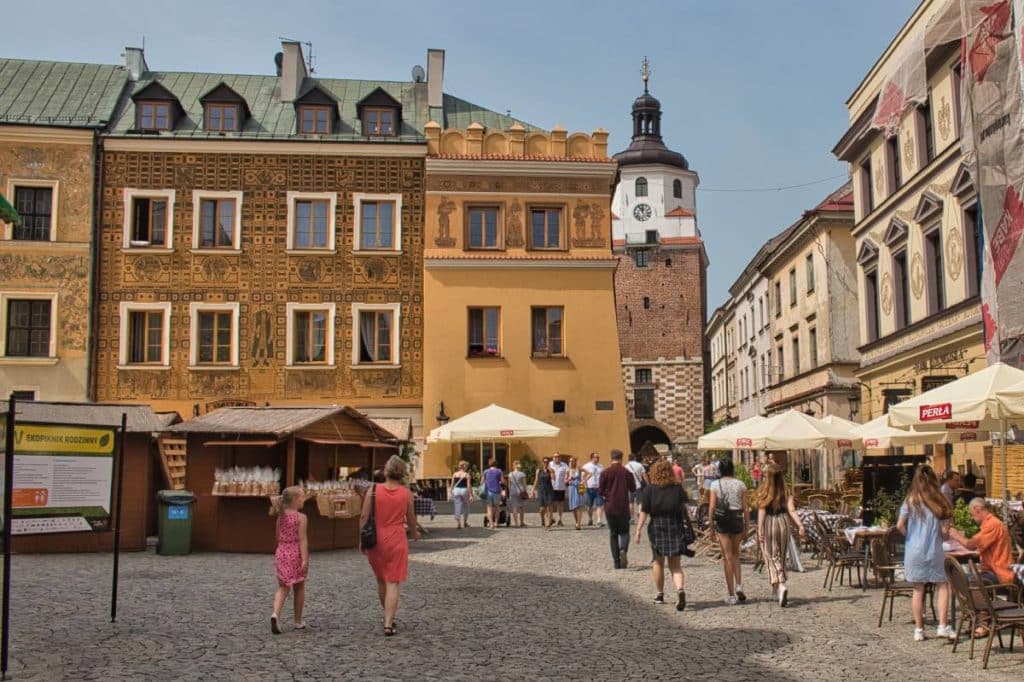
Lublin Poland sights in the old town
Lublin has had the city charter since 1317. At that time the market place was created, which is now surrounded by nice cafes. In the 16th century, beautiful houses were added, some of which provide good photo opportunities (Rynek 2, 8, 12 or 17 for example). In the middle of the market square stands the former crown tribunal. It was established by King Stephen Báthory and existed until the Third Partition of Poland in 1795. It was one of the most important courts in Poland. The building is also the starting point of the Underground Tour – an exhibition on the underground history of the city.
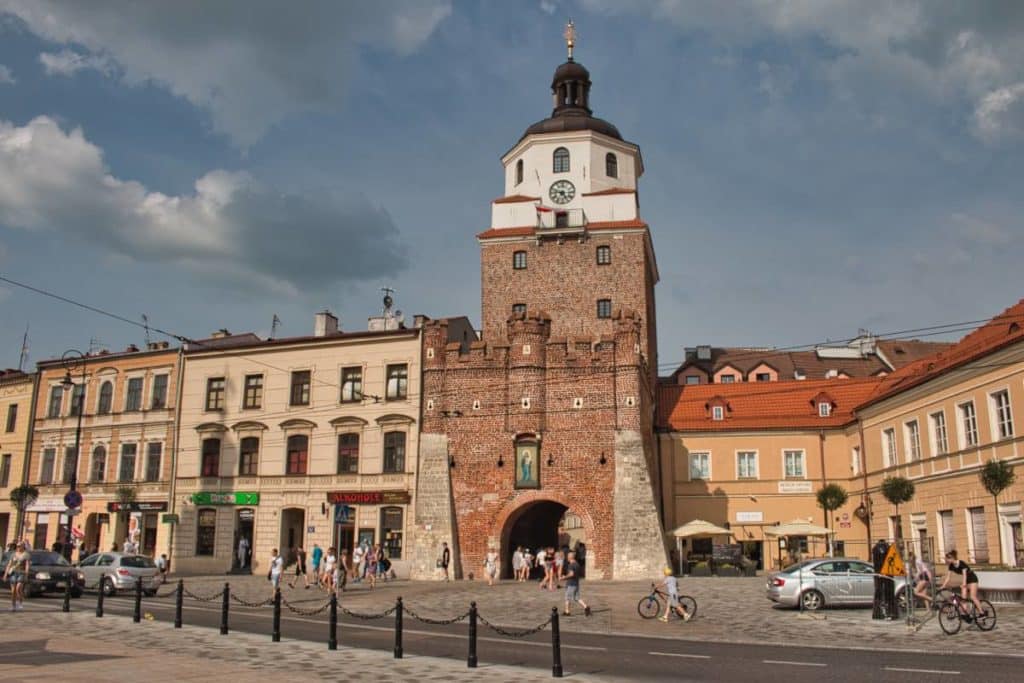
Krakow Gate
The Krakow Gate is the main entrance to the Old Town, which consists of beautiful medieval and Renaissance buildings. Many of them have not yet been restored, but for this very reason they have their own charm. The gate itself looks strange, as it was built in the 14th century, but has been rebuilt countless times since then. At the bottom, with its brick battlements, it looks like a small medieval castle, while the snow-white tower is more reminiscent of the baroque period.
However, the Krakow Gate is not only interesting from an architectural point of view, but is without a doubt the most popular meeting place in the city, after all, here you can decide whether you would rather visit one of the nice pubs in the Old Town or one of the chic restaurants in the street Krakowskie Przedmieście.
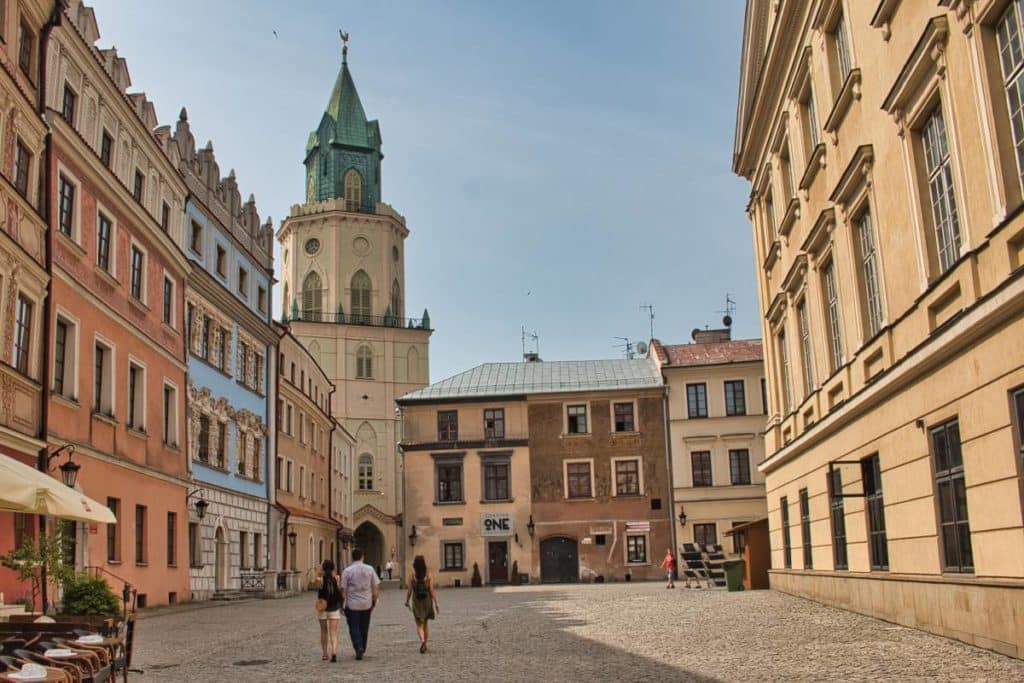
Trinitarian Tower
- ul. Królewska 10
The most beautiful view of Lublin is from the Trinitarian Tower, which is directly attached to the Trinitarian Monastery and is also one of the gates to the Old Town. After an extension in 1819, the Trinitarian Tower now towers 60 meters above the city. On the top sits a rooster, which according to legend is supposed to warn the inhabitants of Lublin of danger. The viewing platform offers the most beautiful view over the Old Town. However, you also have to climb 207 steps to get there.
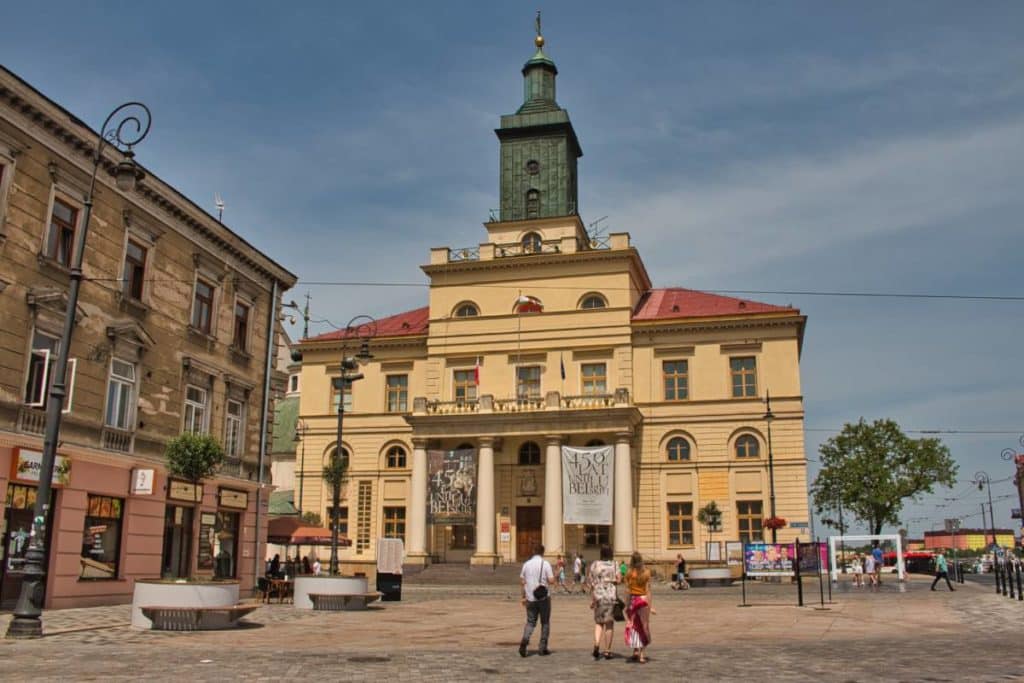
New City Hall
- plac Króla Władysława Łokietka 1
The New Town Hall was built only at the beginning of the 19th century, when Lublin grew beyond the borders of the medieval city. It was built between 1827 and 1828 on the foundations of a former Carmelite monastery. Today, both the Mayor of Lublin and the City Council of Lublin sit here.
Plac Po Farze
The Plac Po Farze is a wonderful place to enjoy the atmosphere of the city outside. Until 1857 a church from the 15th century stood here but was demolished. Today only the foundations are still visible. The square itself is surrounded by restaurants, cafés and small stores. But you can sit on the remains of the walls and enjoy the day or the evening, weather permitting.
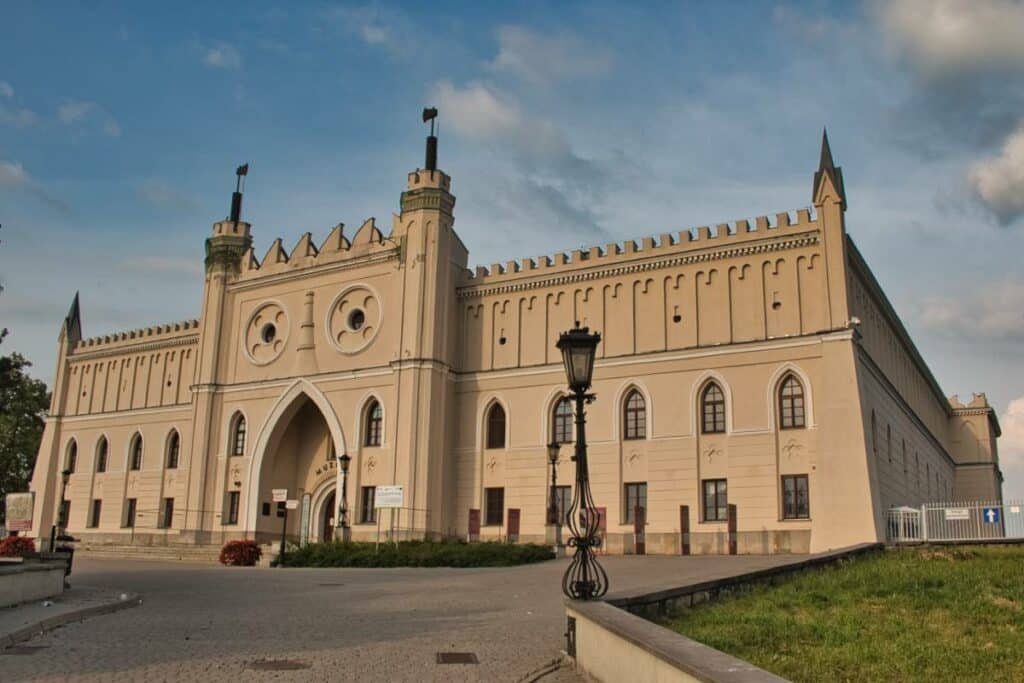
Lublin Castle
- ul. Zamkowa 9, daily. 9 a.m. – 5 p.m.
The neo-Gothic Lublin Castle is enthroned high on a hill overlooking the roofs of the old town and the huge castle forecourt. It is one of the oldest preserved castles in Poland and was built as early as the 12th century, but owes its current appearance largely to renovations carried out in the 19th century. During the Second World War, the Nazis used the castle as a prison and prisoners were often deported to the Majdanek concentration camp on the outskirts of the city. The communists continued the sad history of the castle, both the Soviet secret police and the Polish state security held thousands of opponents of the regime prisoner here and executed many of them.
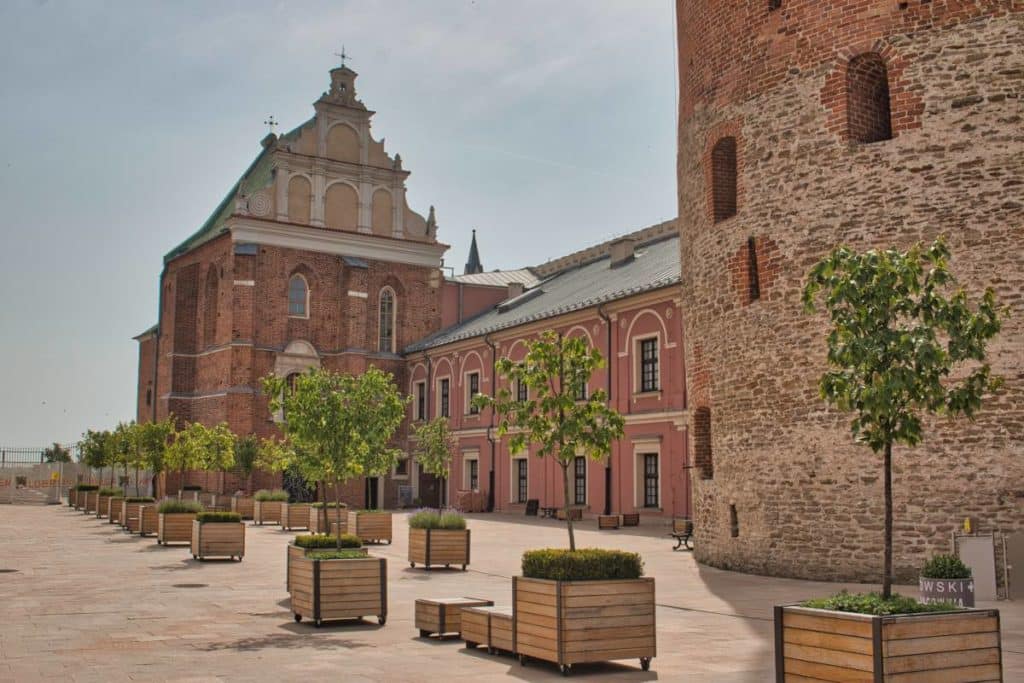
Chapel of the Holy Trinity
The Lublin Castle houses one of the most beautiful churches in Poland – the Chapel of the Holy Trinity. Since the 15th century it has been decorated with colorful frescoes in Byzantine, Christian Orthodox style, which create a mystical atmosphere and are unusual for Poland. In 1569 during the negotiations for the Union of Lublin, church services were held here. Therefore, a few years ago the National Bank of Poland issued its own coin commemorating the chapel.
Jewish Lublin Sights
Before the Second World War, at times about half of the population professed Judaism. Jews were very influential in the city. There were dozens of synagogues and educational institutions. However, the city’s rich Jewish culture was largely destroyed by the Germans in the Holocaust. More than 90% of the city’s Jewish citizens were murdered, many others were displaced. Synagogues were desecrated and demolished. Also the Jewish quarter of Lublin, which was located around the castle, was almost completely demolished. Today there are only few testimonies of Jewish Lublin left. At least, however, the city remembers the Jewish heritage and commemorates the victims of the Nazi occupation.
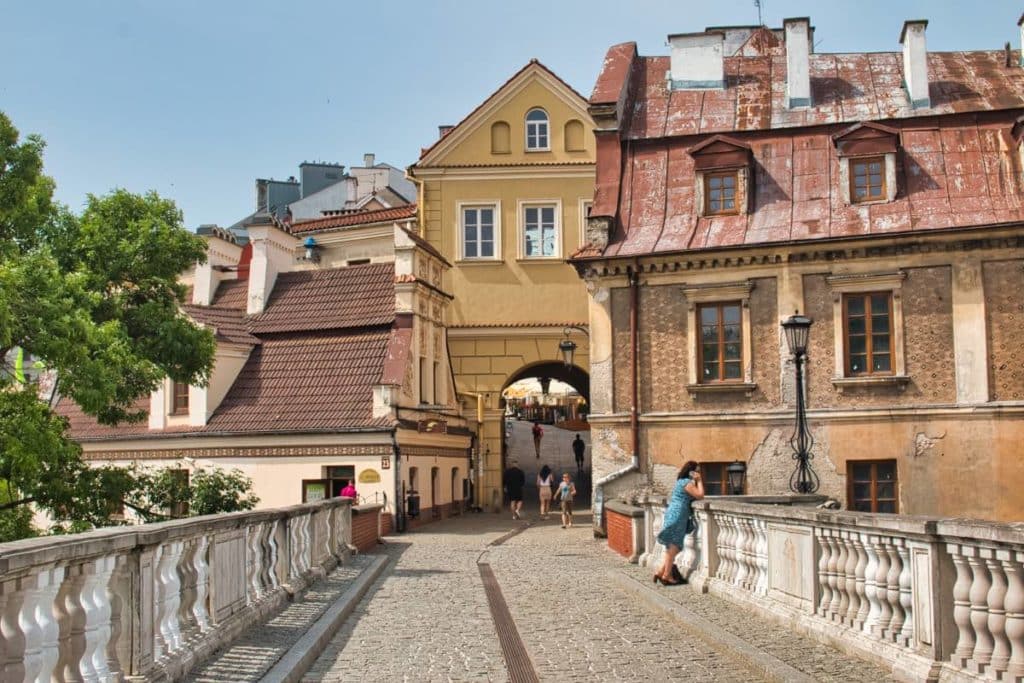
Grodzka Gate
An important center is the Grodzka Gate Cultural Center and Theater. The gate used to separate the Jewish quarter from the Christian quarter. Among other things, there is an exhibition on the past of Jewish Lublin. Among other things, photo negatives taken by Jewish photographers before the Second World War documenting Jewish life in the city are on display here. The pictures were discovered a few years ago in the attic of a house on the market square. The small museum provides an interesting insight into the Jewish history of Lublin.
Majdanek Concentration Camp Memorial
- ul. Droga Meczenników Majdanka 67, April-Oct. daily 9 a.m.-6 p.m., Nov.-March daily 9 a.m.-4 p.m.
In Majdanek, the Nazis set up the first concentration camp in occupied Poland during the Second World War. For a time, the camp was also used as an extermination camp, but it is still not known exactly how many people died here, probably up to 100,000. The camp is relatively well preserved and in the moving Majdanek memorial you can get an impression of the hard life on site and visit the gas chambers. The ashes of many of the deceased were brought together in an impressive memorial. A sad place that makes you think.
Chachmei Lublin Yeshiva
- ulica Lubartowska 85
The Yeshiva Chachmei Lublin was one of the largest Talmud schools in the world between 1930 and 1939. Founded by Rabbi Jehuda Mair Shapiro, 20,000 people attended the inauguration. During the occupation, the building was desecrated by the Germans and the interior was destroyed and rededicated. Only in 2003 was the Yeshiva returned to the Jewish community. Today the building houses the only museum for Hasidism. The synagogue was also restored and is now used again as a temple. There is also a hotel in the building.
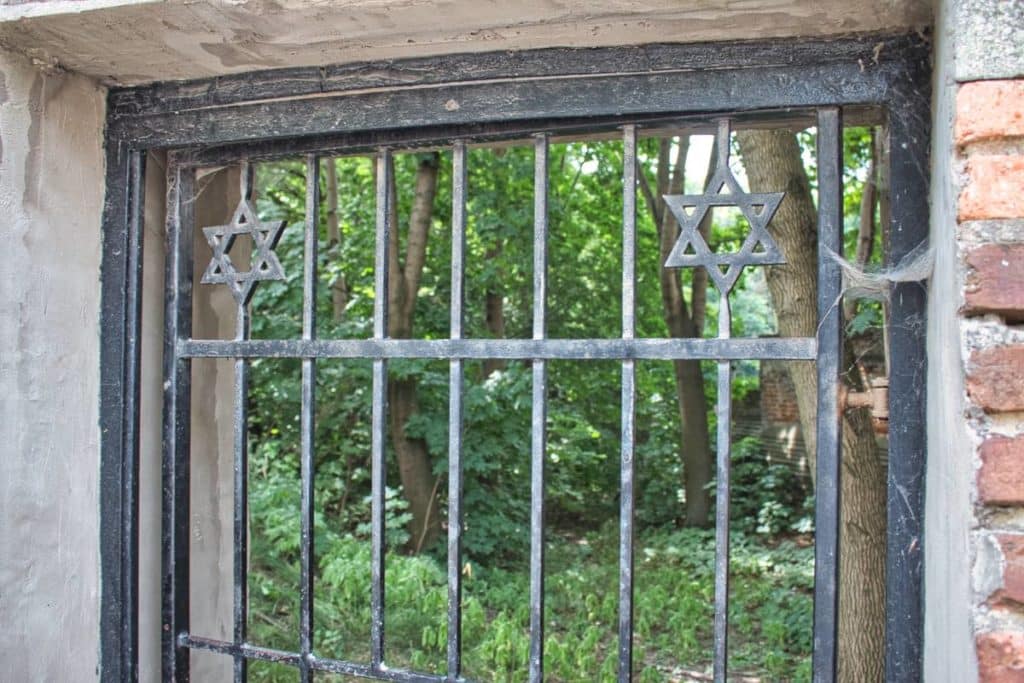
Old Jewish cemetery
- ul. Kalinowszczyzna
Once one of the largest Jewish communities in Poland lived in Lublin. With the Nazi occupation of the country and the Holocaust, this world was unfortunately destroyed forever. But in some places you can still find traces of the rich Jewish past. The best example of this is, besides a still active synagogue with a cultural center, the Old Jewish Cemetery from the 16th century. The Nazis destroyed many of the gravestones and used them for road construction, but some have survived. Access to the cemetery is through the Jewish Community of Lublin, which is located in the Yeshiva Chachmei Lublin.

Krakowskie Przedmieście
A boulevard of the same name can also be found in Warsaw. Translated the name means “Krakow suburb”. This indicates that this street is located in the direction of Krakow. The area used to lie outside the city walls and many magnificent palaces have been built here. Especially the last part, the pedestrian zone called Deptak is a real highlight of every visit to Lublin. In the promenade, which was wonderfully restored a few years ago, there are many cafés and restaurants and street musicians create a nice setting for a short walk.
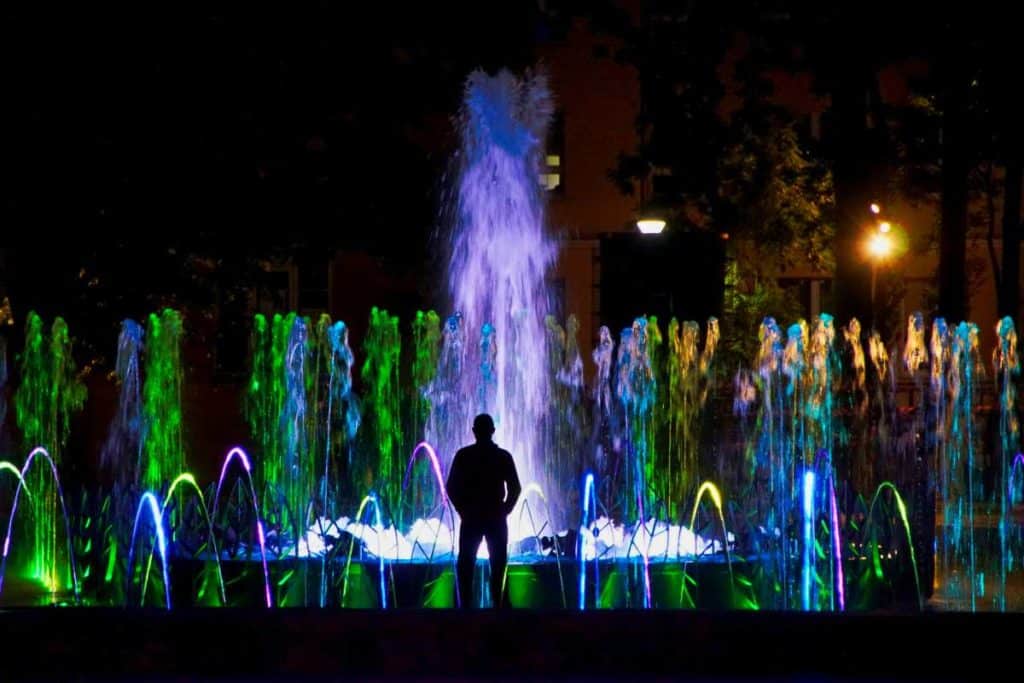
Lithuanian Square
The Lithuanian Square (Plac Litewski) was built in the early 20th century to host military parades. The extensive area on the Krakowskie Przedmieście is today the most important square in the city. Parades, demonstrations, concerts and commemorative events – there is always something going on here. In the shadow of the monument to the Polish politician and military man Józef Piłsudski, a sensational fountain was created in 2016 as part of a redesign, which offers an impressive light and laser show at different times of the day and year to the beat of the music.
Saxon Garden
Lublin’s city park, the Ogró Saski, was created almost 200 years ago. The park, laid out in the style of an English landscape park, is reminiscent of its namesake in Warsaw and, from its name, of the time when the Saxon King August the Strong was also King of Poland. For a long time it looked a little unkempt, but a few years ago it was beautifully redesigned and since then it has become the most popular place for couples in love to walk in the shade of the trees. Tip: In summer, free concerts are always held on the stage, just come and have a look.
Center for the meeting of cultures
- Plac Teatralny 1
It took four decades before the Center for the Meeting of Cultures, the Centrum Spotkania Kultur, was finally opened. It was already planned as a theater by the Polish communists in the seventies. Due to financial bottlenecks in the 1980s and further delays afterwards, the unfinished building stood directly opposite the district headquarters of the Communist Party until the fall of communism. The building was only completed with a different façade under capitalism. Today it houses the music theater and the philharmonic orchestra as well as a large hall with 1000 seats and a congress center. You also have a great view of the city from the terrace on the roof.
Cebularz Museum
- ul. Szewska 4, Mon.-Fri. 9.30, 11, 12.30, 14.30, 16 h, Sat./Sun. 12.30, 14.30, 16 h
Little works in Lublin without Cebularz. The small wheat pancakes with onions and poppy seeds are available at many stalls, in every bakery in the city and occasionally also as a haute cousin variant. They have long since become something of a symbol of Lublin, whose inhabitants are jokingly referred to throughout the country as Cebularze (roughly “onion people”). And what is so popular naturally deserves its own museum. Here you will not only learn all about the popular specialty, but also about Lublin and its inhabitants with a little wink.
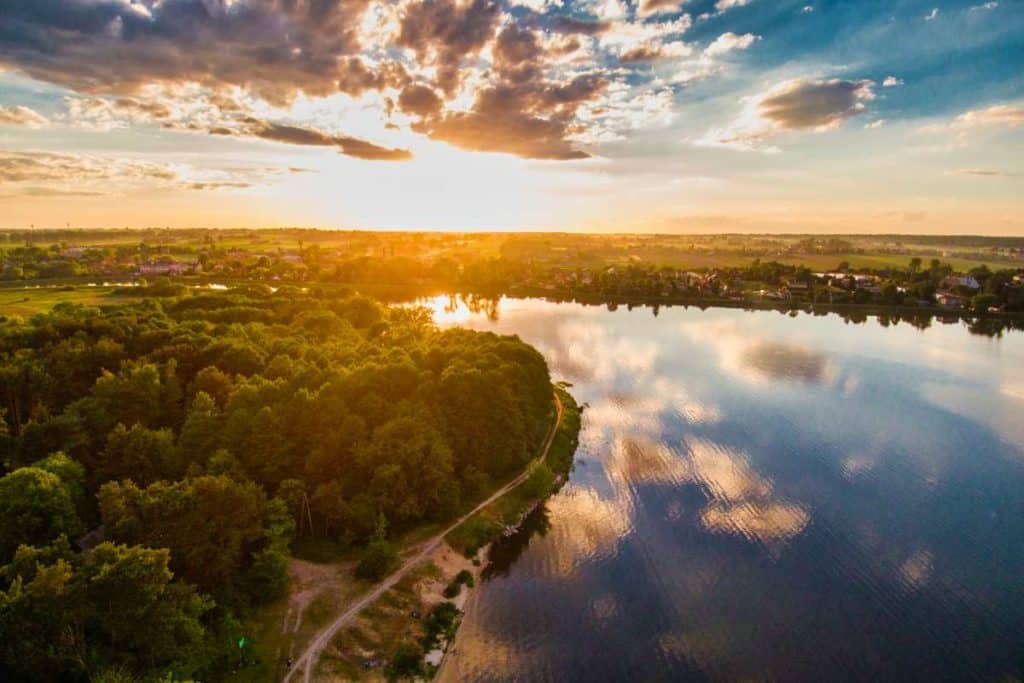
Zemborzycki Reservoir
Shortly after the Second World War there were plans to build a large recreational area in the south of the city. However, these plans were not finally realized until the early 1970s. 40,000 residents of the city were called in as part of a Subotnic service, a “voluntary” work assignment, to excavate a 6.3 million square meter lake – it was worth it! A sometimes wild looking, sometimes well-kept area was created with a marina, camping site, restaurants, cycle paths, woods and much more, which is one of the most popular places in the city, especially in the summer months. A wonderful place to simply relax and unwind in good weather.
Open Air Museum Lublin – Muzeum Wsi Lubelskiej
- al. Warszawska 96, core hours: Tue.-Sun. 9 am – 3 pm, in summer also open longer and on Mondays
Since 1979, visitors have been able to gain an impression of the beauty of the region and rural life in eastern Poland in the past on a 27-hectare area on the outskirts of the city. Windmills, small chapels, farmhouses and even a small aristocratic palace were demolished elsewhere and then painstakingly rebuilt in the Muzeum Wsi Lubelskiej to pay tribute to the region’s historical heritage. A walk through the area also takes you past ancient wooden churches, for which the Lublin region is famous. A few years ago, a small town was also created that shows life in Lublin before the Second World War. In short: a perfect place to spend a relaxing afternoon in good weather.
Perła Brewery
- ul. Bernardyńska 15
Polish beer is now also increasingly available in our supermarkets. However, I was quite surprised that I have actually seen a bottle of Perła here before. The small brewery has continued to grow since reunification and is now one of the most popular in the country – no wonder, the quality really is first class. Until a few years ago, the beer was still brewed in an old monastery complex, which was converted into a brewery in the 19th century. Today, you can visit this complex, delve into the brewery’s underground, eat in the restaurant and, of course, drink a Perła or, in summer, watch a movie for free while enjoying a cold beer on an artificial beach on the brewery grounds.

